
Reproducing the Costume Close-up Jacket
This was one of the easiest reproduction pieces I’ve done thus far, mostly because I only had to make the most minor of adjustments to the original pattern to make it fit Ashley (she swears she was born in the wrong century!). It went together beautifully, the only hitch being that you have to remember with the lapped seams to leave the seam allowances at the neckline and the bottom free so that the edges can be turned in smoothly. I’m so pleased with the end result; after all, one really can’t help being charmed by the cut of the back with those flouncey little “swallow tails”! The sleeves curve to cup over the elbows, which, along with the short skirt, dates the jacket to 1775-1785.
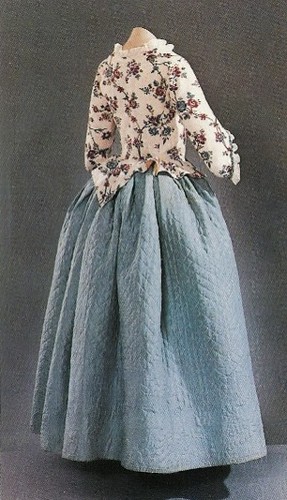

The original jacket, as displayed in Eighteenth-Century Clothing at Williamsburg, left, with my reproduction on the right.
The pattern: Costume Close-up, by Linda Baumgarten, with John Watson and Florine Carr, pp. 39-42. The original is in the collection of Colonial Williamsburg’s DeWitt Wallace Museum (acc. no. 1962-259).
Construction details: The jacket is entirely hand-sewn. Costume Close-up gives superb details about the construction methods used in each of its garments, and it is immensely rewarding when using this book to know that your final product can be a very close copy of the original in almost every way, from the cut of the pattern, to the order in which the pieces are assembled, to the stitches used for each part. My jacket, like the original, is assembled using lapped seams. The edges are then turned in and finished with a stitch called “le point a rabattre sous la main,” which Baumgarten describes step-by-step in the introduction to the book.

The back of my reproduction jacket.
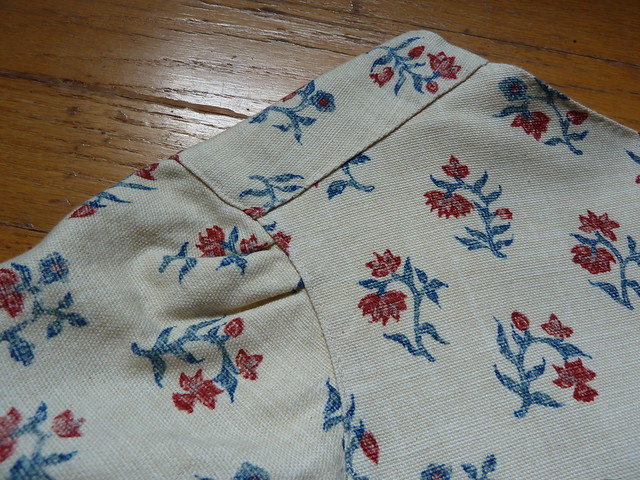
The back of the shoulder strap, showing the lapped seams and the sleeve set in from the outside.
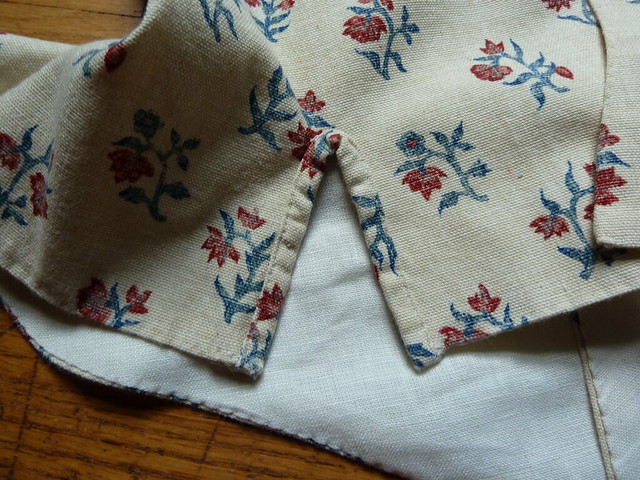
The bound front slit in detail. This slit was used to help give the jacket a more tailored shape when pulled tight around the stays.
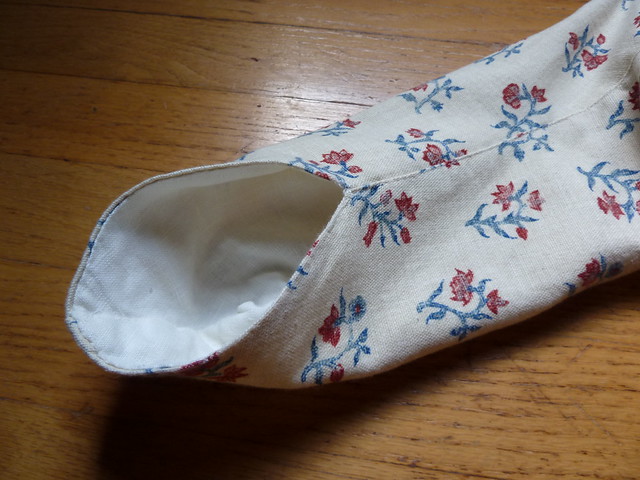
A detail of the sleeve, showing the turned under lining finished with la point a rabattre sous la main.
Unlike the original, though, I elected not to place lacing holes along the front edges. I thought it might spoil the simple yet elegant lines (and I wasn’t in the mood to hand-sew that many eyelets!). The stomacher is thus secured in the other period-appropriate way, with straight pins. Though a stomacher is missing from the original garment, Baumgarten believes, based on the size, shape, and fit of the jacket, that one most likely did exist, or that the gap left in the jacket's laced front would have been filled by a handkerchief. My stomacher pattern is a simple one, based on the shape of other extant stomachers worn with both jackets and gowns.
The original in a study drawer at the DeWitt Wallace, with my reproduction beneath. Forgive the wrinkles in the lining; I hadn't ironed it before this picture was taken!
Finishing the look: The swallow tails of the jacket, and the period to which the jacket dates, demand that this garment be worn supported by a bum roll underneath in order to ensure it falls properly over the hips and back. The jacket is thus worn over a shift with narrow, close-fitted sleeves, fully-boned stays, a bum roll, and a cream linen petticoat. A madder red linen outer petticoat and a shallow-crown straw hat embellished with box-pleated red silk satin ribbon complete the look, which is accessorized by a linen handkerchief and a double-strand necklace of red coral beads tied with a brown silk ribbon.
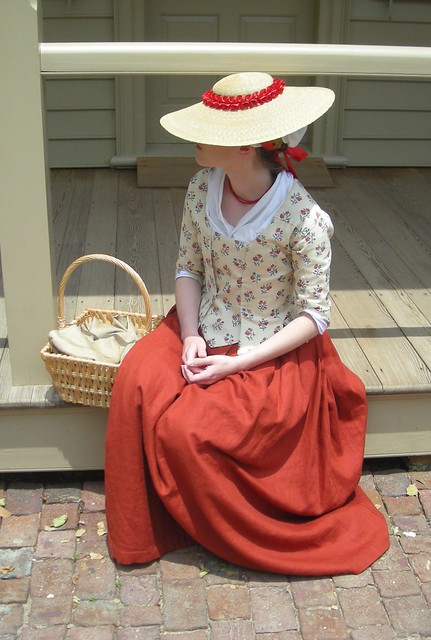
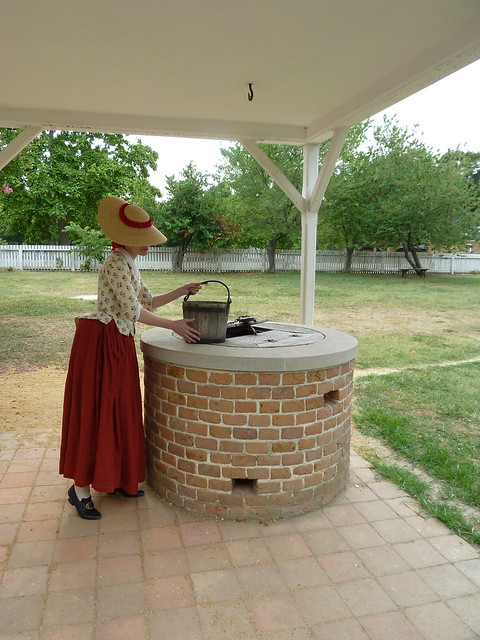

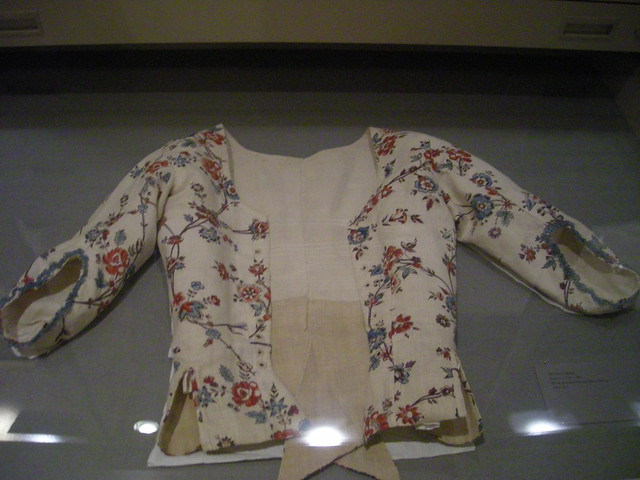

3 comments:
Directions in Costume Close-Up? That's my next sewing book to read! I am so impressed with this jacket!
Laurie
Guess what I'm in the middle of? I could not figure out that turning under stitch in Costume-Close Up but I found a sample of my doing it in the CDC stitching class! Wanted to let you know I am referencing this and the flicker photos! Thank you for posting all this.
Can't wait to hear all about your class!!!!
Laurie
Really lovey job!
Do you have any suggestions for sizing up the pattern in Costume Close-up? I need to add a full six inches to the bust and waist and I'm afraid of losing the original look of the jacket. Or would you instead suggest draping it on a dress form?
Post a Comment